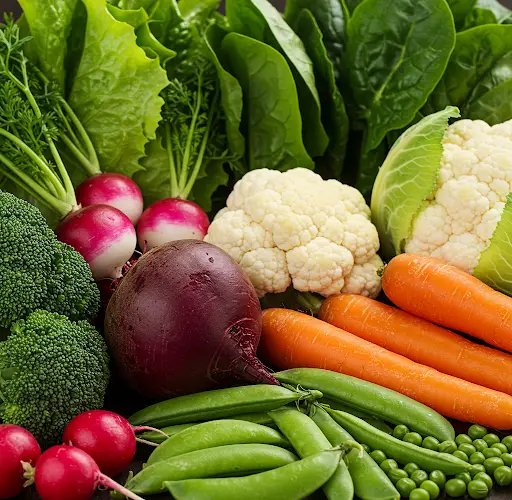10 Vegetables to Plant in August for a Thriving Fall Harvest (Zone 6A and Up)
August marks a golden opportunity for gardeners in USDA Hardiness Zone 6A and above to plant vegetables that flourish as temperatures begin to cool. With the right selection of crops and proper timing, you can extend your growing season well into the fall, enjoying a fresh harvest of leafy greens, root vegetables, and more. Here are ten great vegetables to plant in August, along with guidance on whether to start them from seeds or seedlings.
1. Lettuce
Lettuce is a classic cool-season crop that grows quickly and prefers the mild weather of late summer and early fall. It should be sown directly into the garden from seeds. Lettuce germinates easily and can be harvested in as little as 30 to 60 days, depending on the variety. Keep the soil consistently moist for the best growth, and enjoy multiple plantings for a continuous harvest.
2. Spinach
Spinach thrives in cool weather, making it perfect for fall planting. Start it from seeds sown directly into the garden. This leafy green matures in about 40 to 50 days and benefits from consistent watering and some shade during lingering summer heat. Spinach leaves are most tender when harvested young, and cooler temperatures help preserve their flavor.
3. Turnips
Turnips are a dual-purpose crop, grown for both their roots and nutrient-rich greens. They should be planted directly from seeds into well-drained soil and in full sun or partial shade. Turnips mature in about 50 to 60 days, and the cool weather helps improve their flavor and texture. Thin the seedlings early to give each plant space to grow to its full potential.
4. Radishes
One of the quickest vegetables to mature, radishes can be ready to harvest in just 25 to 30 days. Sow the seeds directly into the garden in well-drained soil and full sun. Because of their speed, radishes are perfect for successive plantings throughout August and September. They are ideal for filling in gaps between slower-growing crops.
5. Carrots
Carrots grow best in cooler temperatures, which help concentrate their natural sugars and enhance flavor. Directly sow carrot seeds into loose, well-tilled soil and thin the seedlings as they grow to prevent overcrowding. While carrots typically take 70 to 80 days to reach full maturity, they’re worth the wait. Fall carrots are some of the sweetest you’ll ever taste.
6. Broccoli
Broccoli is a cool-weather crop that does especially well when planted in late summer for a fall harvest. Start with seedlings rather than seeds to ensure the plants mature before the first frost. Broccoli grows best in full sun and benefits from nutrient-rich, well-drained soil. Be sure to space the seedlings properly to encourage large, healthy heads.
7. Cauliflower
Like broccoli, cauliflower should be planted from seedlings in August. This gives the plant enough time to form heads before cold weather sets in. Cauliflower needs consistent moisture and a fertile growing medium to thrive. Mulching can help retain soil moisture and protect the roots. A steady supply of water and nutrients will help produce large, tender heads.
8. Beets
Beets are another excellent dual-purpose crop. Sow seeds directly into the garden, where they will mature in about 50 to 60 days. Fall beets are sweeter and more flavorful than those grown in summer. The greens are also edible and nutritious. Keep the soil moist and thin the seedlings for best results. Beets do well in full sun but can also tolerate light shade.
9. Peas
Peas love cooler temperatures and can be planted again in August for a fall crop. Sow seeds directly into the garden in well-drained soil. Peas usually take 60 to 70 days to mature, so they are well-suited for late-season harvesting. Provide trellises or supports for climbing varieties, and harvest regularly to encourage continued production.
10. Beans
While beans are considered warm-season crops, bush bean varieties can still be planted in early August in Zone 6A and above—if your first frost date falls late enough. Beans grow quickly, maturing in just 50 to 60 days. Sow seeds directly into the garden and provide adequate sunlight and water. With a bit of luck and a warm September, you can enjoy a final flush of tender beans before frost arrives.
A Productive End to the Season
Planting in August is a great way to make the most of your garden as summer winds down. By choosing crops suited for cooler temperatures and understanding whether to start from seeds or seedlings, you can enjoy a healthy, flavorful fall harvest. From fast-growing radishes to hearty carrots and leafy greens, these vegetables will continue producing as the season shifts—keeping your garden thriving well into the cooler months.



